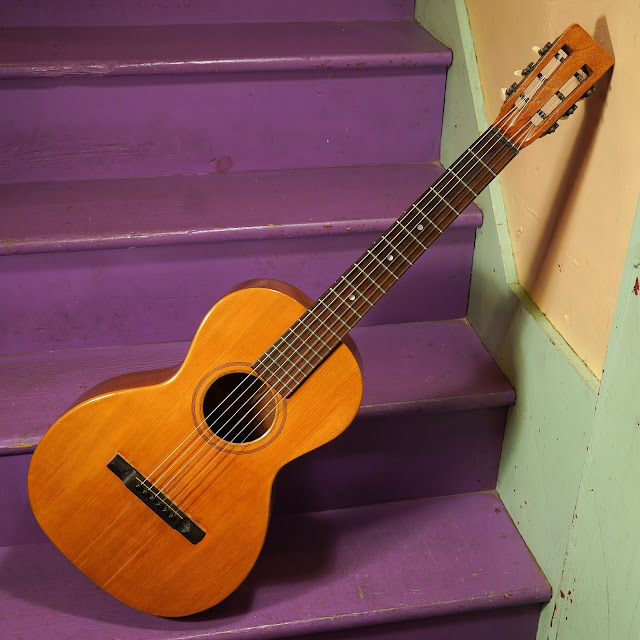1890s Thompson-branded Parlor Guitar
So, the thing about this guitar is that it has "Thompson Music Co, Chicago" branding in the soundhole but everything about it screams late-1800s Regal-made except for the bracing. Its top and back are braced more like Bay State instruments. It's curious! I still think it was probably made at the original Regal factory before Lyon & Healy brought them to Chicago, though. It has that build style and the neck, heel shape, and body shape are spot-on for them -- along with the binding-less top and medium-colored mahogany for the back and sides.
This is a local customer's instrument and, thankfully, he was on-board with stringing this up with nylon (modern "gut") rather than trying to watch it die slowly with steel strung on it. It's had some rough work done on it in the past (someone bolted-on the bridge -- which is not original but is period -- and did a crude headstock repair), but I got it going via a neck reset, bridge reglue, fret level/dress, crack cleating and sealing, and setup work. I also added some side dots, too.
It's now playing perfectly and humming-along happily and has that sweet, mellow, balanced, perfect-for-fingerpicking little folk-classical sound. It has the benefit of a rosewood fretboard, too, which feels a lot nicer than the usual stained maple one finds on this era of guitar.
I just want to say that this guitar is a good example of why all back braces in flattop guitars should be low and wide rather than tall and thin. I know that can make the sound a little more "woofy" on a big guitar. But... the back braces on this guy are all tight and well-glued and have been that way for 130 or so years. On almost every other period guitar with thinner, taller back braces, at least a few have sprung and can be a bear to repair if the back has deformed because of it.


















Comments